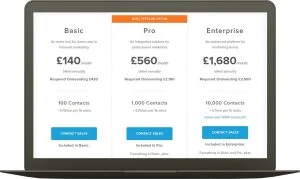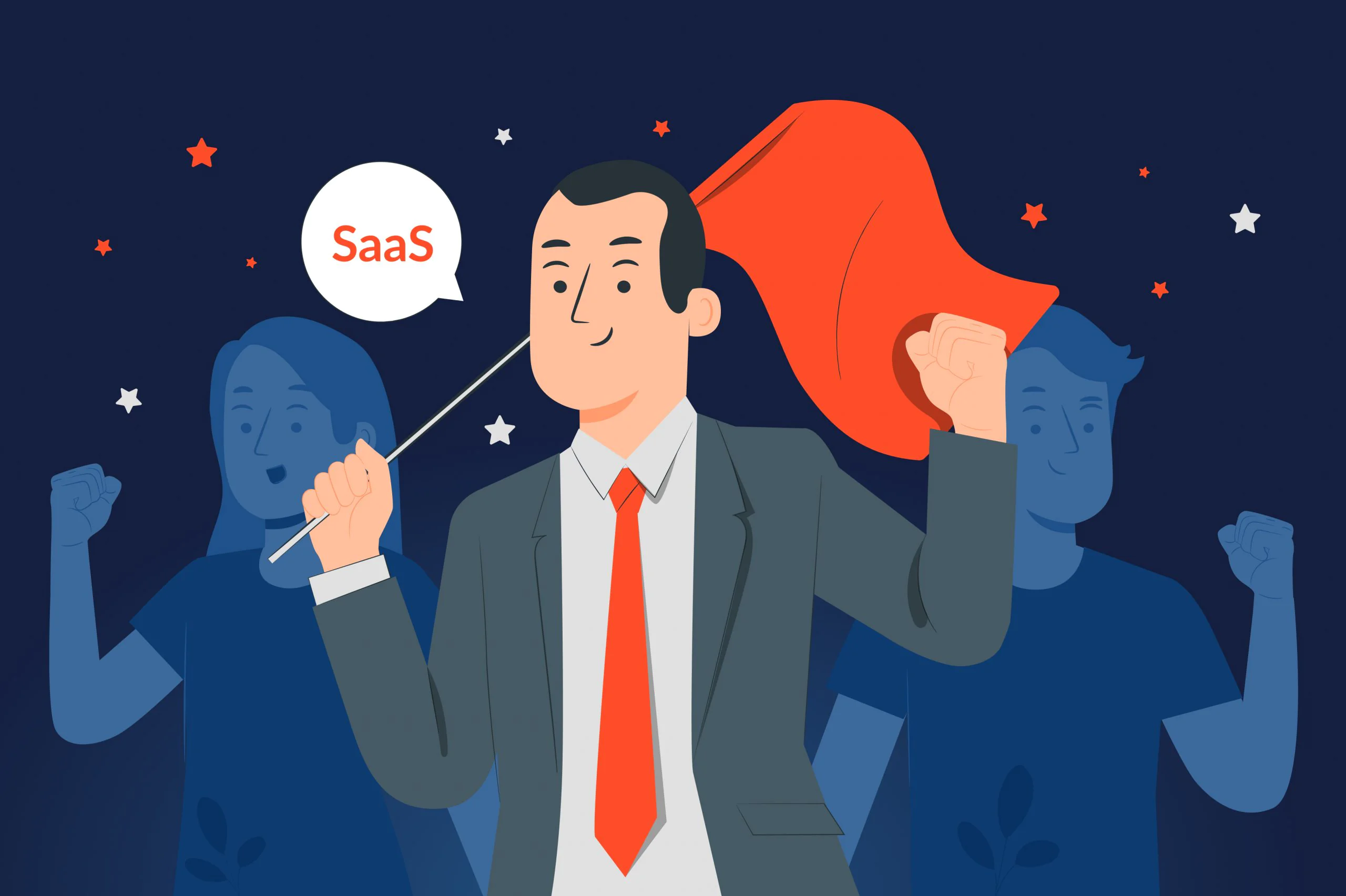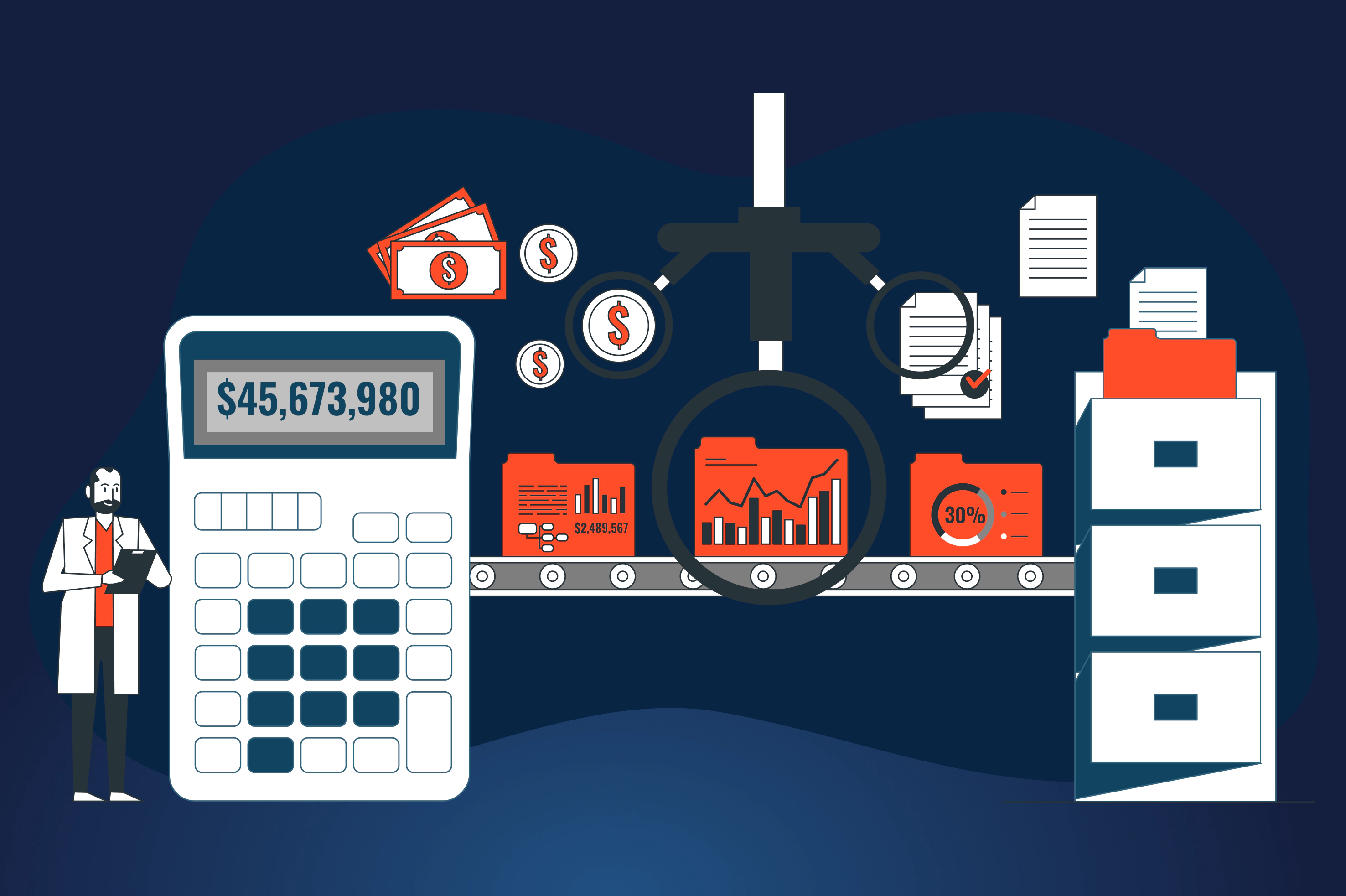Have you ever thought about who your ancestors were back in the Middle Ages? What if your many-grands-father was a talented hunter who was shooting his bow with an impressive sharpness, so that he could hit an apple placed on the head of your many-grands-mother? (And that’s how your many-grands-parents met).
Now, you find yourself wishing you inherited a sharp eye for accurate Software-as-a-Service (SaaS) product pricing. The matter is that SaaS consumers are quite picky when it comes to a choice of a solution they’re going to pay money for. That is why the way you price your SaaS product is a critical success factor for your startup.
Although, many SaaS startups spend more time on activities such as ordering toilet paper supplies for the office rather than on a deep analysis of a product’s pricing model. As a result, 30% of pricing decisions made by SaaS companies don’t deliver any profits.
Of course, you can’t just count on a chance that you really got a sharpshooter’s talent to hit the target, be it an apple or SaaS product price. The JatApp team can’t teach you archery, but we can tell you a lot about SaaS product pricing, which is why we have prepared a guide on SaaS billing models.
We’re not going to say that every model suits its own type of SaaS products, because there are pricing strategies and models that gain ground amongst SaaS companies for a good reason, while the rest of billing models are an exception rather than a common trend.
Let’s dig in!
The right pricing makes your SaaS bloom
SaaS pricing differs from traditional way of product pricing. Most SaaS users have to pay a subscription fee for using the product, so it’s not a one-time purchase of software that consumers own for the rest of their lives.
People don’t need a particular product all the time, and paying much money upfront even for once doesn’t make sense. Consequently, SaaS companies need to approach pricing differently.
Since users have to pay regularly, the success of a SaaS startup depends much on how well the company prices its offer. In addition, proper pricing enables a SaaS company to unleash such opportunities as:
- Competitive advantage. Other SaaS businesses also struggle with finding a golden standard for pricing their products, but still keep caring about ordering toilet paper supplies more. If you are wise enough to devote much time to price optimization, your SaaS product is more likely to beat competitors that are overconfident about their pricing strategies.
- True customer value. When customers select a SaaS product, they estimate how much value it can deliver. Overpriced SaaS products usually face an overwhelming user base decline. By making pricing valid to the value your SaaS solution creates, you’re likely to attract and retain customers in the long run.
- Untapped growth. The majority of startups are craving for customer acquisition as the main driver of growth. However (raising a forefinger), SaaS companies that pursue monetization are 4 times more efficient in managing long-term growth than startups laser-focused on customer acquisition and retention only.
- Strengthening SaaS unit economics. This capacity is actually the result of two previous ones. A SaaS company matures when it manages to lower its customer acquisition costs (CAC) and increase customer life-time value (LTV). When you succeed in a proper adjustment of your product price, you’ll hit the bull’s eye and get your devoted audience that will use your product continuously. You achieve a win-win situation when you spend less money on attracting customers, and they bring you maximal revenues possible.
7 pricing strategies, but there are two that are the right choice
Right now, we won’t say which SaaS pricing strategy is the best choice. We want to keep you intrigued until the moment you read about it. You may also find out that some other strategies better suit your SaaS product. Anyway, let’s discuss all pricing strategies we have on the table.
Penetration
With this strategy, you deliberately low the price to attract as many customers as possible from the very launch of your SaaS minimum viable product (MVP). The “land and expand” approach is effective to create a big customer base, but you’ll have a little bit more than crumbles of Oreo cookies in your pockets.
You have to think in advance how you’re going to upsell and cross-sell your product to finally earn revenue. We don’t say that penetration pricing will lead you to no result. But this strategy is an uncertain approach despite its simplicity, and there are more reliable ways to price your product after all.
Captive
With captive pricing, you actually set a bait with a low-priced core product and then charge extra money for additional solutions. It does sound like a good strategy, but you need to have these extra products to offer, and these additional solutions must be valuable to users.
Otherwise, you’ll end up facing big losses that you’re unable to recover from, as your core product doesn’t earn enough capital. Pricing your SaaS solution this way makes sense only in case you have a full-fledged ecosystem of SaaS products, and you can say confidently that every single product creates unique value to your users.
Skimming
Skimming pricing takes a different approach: you set the price as high as your greediness and impudence can allow. Then, you drive the price down gradually as soon as the hype around your product becomes silent.
The problem is that the hype should be a real blast, which means you have to work on it. You need to make the marketing campaign truly appealing and viral, not to mention that the product should be mind-blowingly innovative.
Hype is a mighty marketing power, since hype can make people pay huge money for digital drawings of stones. But you should manage that power right. From the perspective of SaaS product pricing and business as a whole, relying solely on extravagant marketing decisions won’t dial up the growth engine of your SaaS startup.
Premium
Premium or prestige pricing aims at setting high prices to show that your SaaS product is as exclusive and luxurious as an Hermès bag. Perhaps, the unwisest way to price your SaaS product, really.
This bag sells well with a prestige pricing strategy. Your SaaS product won’t. Yeah, life is unfair.
If your SaaS company is not a big brand, following a premium pricing strategy makes even less sense. We don’t have any credible information to explain when and how you may use this pricing strategy to make your SaaS business succeed.
Free trial
Now this is a really wise strategy. You give your potential customers a chance to experience your product for free, so they can understand whether they like it and will use it regularly. Some companies are even ready to pay their customers for trying a SaaS product.
Examples of the most popular SaaS companies offering a free trial period
That is why trials usually involve some long period (a month or so). You can also provide a set of features for trying a limited number of times such as 10 free video clips created, 1 work breakdown structure drawn, and so on.
In 2019, nearly 82% of SaaS companies missed big growth opportunities by shunning away from making a free plan offer to their target audiences. Unlike the mob of greedy SaaS businesses, our client, facility management platform, decided to introduce a free trial as a starting point for negotiating with facility management companies. The platform has acquired 20 large active corporate customers, and around 60 are ready to onboard as soon as the SaaS rolls out the next major update.
Cost plus
It is the most common, but hardly effective SaaS pricing strategy today. You just calculate costs on building a SaaS product and add a margin from which you earn revenue.
We won’t lie, it’s a solid way to keep your budget stable, but the risk of failure remains. Businesses exist to make revenue, and if they don’t, they fail sooner or later. Covering your expenses doesn’t guarantee you that your SaaS product will get enough customers, which makes the advantages of cost plus strategy quite unreliable.
Value-based
Together with free trial, value-based pricing strategy is an excellent decision for almost any SaaS company. Customers are willing to pay no more than a SaaS solution can offer in return, since they approach every SaaS product from the perspective of the value it can create.
On top of that, users make a choice amongst dozens of similar products. When you price your strategy according to the value it delivers, you are more likely to win customers.
Placing the emphasis on the product value forces you to keep enhancing your product in order to make it offer as much value as possible. We recommend combining value-based pricing with a free trial proposition. In such a way, your customers can experience the value of the product before they pay and then subscribe for the solution at a reasonable price.
SaaS pricing models and our expert opinion about them
We’ve just covered strategies of how to determine a price for your SaaS product. Now, we’re going to discuss what you can make your customers pay for.
User-based
This SaaS subscription pricing model is popular with SaaS products aimed at businesses. For instance, a SaaS platform provides a scheduling tool and charges companies for each user they connect to the product’s platform.
You can elaborate upon this model by charging businesses per active user, thereby making expenses of a corporate customer more flexible. Employees may have different needs to use a particular SaaS product at the workplace. Organizations overpay for workers who need to use your tool a couple of times per year.
On a side note, you can combine user-based pricing with any other models. For example, the facility management platform we talked about before, takes the number of users into account before offering a facility management company a flat-rate price contract.
Usage-based
With this SaaS pricing model, your customers will pay for how much they used your product. Amazon Web Services (AWS) is an on-point SaaS subscription model example here: their customers pay for a number of application programming interfaces (APIs) connected, data size used, or number of transactions made. It is a convenient pay-as-you-go pricing model that has already gained a foothold with many SaaS companies.
The usage-based pricing model makes your customer base grow naturally, as users have a full range of features to get their jobs done. Beyond a doubt, many customers will quit using your product, but the devoted users will make your solution profit spectacularly.
Just have a look at the example of Zocdoc, a healthcare marketplace. The company was initially charging users with a flat fee price, but then switched on the usage-based pricing model.
Tiered and per feature
Per-feature pricing model is simple as a pie. Consumers select what features they need and pay just for them, or purchase a package of functionality that is relevant to a specific type of user.
In case of packages, the price differs by the number of features available or benefits they deliver. The majority of SaaS companies offer free, plus, and premium packages that differ by the number of features available and price.
The tiered pricing model is very similar to the per-feature pricing, but you offer different functionality packages without an opportunity to pay for individual features. You may come across a so-called freemium pricing model that actually means the same: a SaaS company offers the core product for free and proposes to upgrade for a paid plan to get extra possibilities with the SaaS application.
This SaaS pricing model is the most popular one because you can let your customers experience your product before they commit to paying for a regular subscription.
Flat-rate
Flat-rate is the simplest SaaS pricing model. You have one product and you give it one fixed price. This approach to charging your customers is appropriate when your customers certainly need the whole product, and dividing it into bite-sized chunks of features is unreasonable.
Dive deep to find an adequate billing model
Even though we were trying to convince you that you should use a value-based strategy and offer a free trial, you still have to think over different pricing methods. We suggest you applying the following framework to determine whether particular billing strategy and model will work for your SaaS product:
- CAC/LTV ratio. As we have already discussed, perfect SaaS pricing strategy and model should minimize your CAC, while LTV skyrockets like mad. You definitely have to pick up a pricing strategy and model that show you such a good ratio estimate. Then, just forget about the rest of what we were saying in this article.
- All team members share the same opinion about pricing strategy. Making data-driven and calculated decisions is obviously important to your business, but trusting your gut feeling and other people is paramount as well. Listening to the opinions of your team members can be another smart move before picking up SaaS pricing strategy and model. When you have a shared vision of how to price your product and charge your users, you’re most likely to step on the right track.
- The chosen pricing strategy aligns with the buying persona you target. When you develop a SaaS solution, you have some group of customers in mind. That’s why buying persona should determine pricing of your product. If you aim at freshmen medical students, setting sky-high prices would be a very strange decision.
- Data insights taken from your current customers indicate optimal SaaS pricing strategy and model. As you are thinking about pricing your SaaS product, you’ve probably developed one already and have at least a little number of customers. We encourage you to collect data about their interaction with the product and what they think about the current pricing method you use. That’s the best way to turn your pricing strategy towards the right direction.
But how do you understand that the SaaS pricing strategy and model you’ve chosen are effective in practice? Together with the CAC/LTV ratio, you need to calculate two important metrics related to monthly recurring revenue (MRR): growth churn and expansion.
Growth MRR churn shows how many of your users quit using the product or downgraded to a cheaper package. Naturally, you need to have that rate as low as possible. To calculate growth MRR churn, you need the following formula:
An expansion MRR reflects on how many customers you manage to upsell after the trial period or how many customers decided to pay for additional products of your SaaS platform. You can calculate this rate with this formula:
Needless to say, you have to use this metric together with growth churn rate to see whether your SaaS pricing strategy and model are effective.
Focus on value you want to create, while JatApp will do the rest
There are different SaaS pricing models and strategies, but in our opinion, shooting value-based strategy and freemium model arrows will hit your target audience. Users perceive any SaaS product as the value it creates for them, which is why you should price your product accordingly and look for ways to add as much value as possible. Archery skills don’t matter at all!
JatApp can help you create a unique value offer. Our company has been developing software products since 2015, and 99% of our clients were satisfied with solutions we delivered.
If you want to develop a robust SaaS solution that creates a genuine value for your customers, leave us a note. We’ll get back to you as soon as possible.















